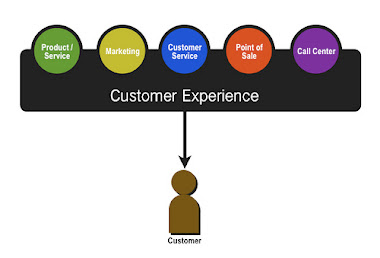End-to-End Experience Lifecycle
To fully understand a customer, user, product or service experience, Akendi uses the framework of its End-to-End Experience Lifecycle™. This framework maps the journey of a total experience (both customer and user experience lifecycles ) – from initially learning about the product or service through all Experience Points™ including awareness, purchase, out-of-box, setup, use, maintenance, upgrade and recycling.
End-to-End Experience Lifecycle™
By understanding and applying the End-to-End Experience Lifecycle to each Experience Point™ , we ensure that no aspect of each experience is overlooked. This is true whether a total experience lifecycle spans 10 minutes (e.g. a French Fry carton), a few years (e.g. software) or several decades (e.g. a train or a bce ookstore).
Most importantly, the End-to-End Experience Lifecycle ensures that both the organization (internal) view and the audience (external) view are represented in evaluating the Return on eXperience (ROX).
Audience Experience Points™
The way external audiences (customers, clients, users) experience an organization, a brand, a product or service shifts over time. The End-to-End Experience Lifecycle considers and respects this changing relationship in each Experience Point™ :
Customer Experience Lifecycle
This is the period where customers become aware about the product or service, exploring different options and understand the product, comparingthe value and offering to others in the market place and finally making apurchase decision.
With each step including a strategy, research, design and testing aspect (the experience canvas) of customer experience points.
User Experience Lifecycle
In general, post-purchase customers become users as they interact with the product to achieve their goals & tasks in their context of use.
But pre-purchase, there is also a period where the user experience (and usability) plays a key role in the total experience. How someone finds the right information to explore product features, how to easily compare this with other offerings and the user experience of the purchase itself (e.g. shopping basket in case of an online experience) are critical and co-exist with the customer experience.
Post purchase, the user goes through several steps, from inital out-of-boxexperience, setup, regular operation, maintenance to upgrading and ultimately disposal & recycling.
Each of these steps in the end-to-end experience lifecycle need their canvasof strategy, research, design & testing to optimize each experience point.
Client Experience Lifecycle
Over time users may become clients. Maintaining the engagement and ensure retention: it signifies a long-standing relationship that comes with certain expectations given their history with the organization and their products/services.
Clients may ultimately become loyal fans with a high desire to buy the next remarkable product, a greater reluctance to switch companies, and a significantly higher likelihood to recommend to others.
To strategize, research, design for and validate the experience with these clients clearly pays off in the long run as aquiring new clients is usually more costly than retaining existing clients.
Organizational Experience Points™
Each organization will have unique modes of thinking about the customer and user experience it wishes to deliver. The End-to-End Experience Lifecycle respects each of these views:
Brand Experience
The brand experience is the first experience a prospect of new customer will encounter as he or she learns of, and investigates, potential vendors. To deliver on its brand promise, an organization must develop and hone its image and position in the marketplace.
The goal here is to research and design brand experiences that will enticecustomers and clients to join the brand and stay with the brand long term.
Product Experience
During research and design of the product experience, companies are primarily concerned with tangible and intangible aspects of the product and what experience its users are having.
The product experience has also a distinct emotional aspect when you design for customers to have a positive visceral reaction to a product, ie. their first impression. The strategy is to create users that connect, are proud of their product and become passionate advocates.
Service Experience
A service experience can combine several products and other interactions with the organization that together make up a service. A service experience is remarkable when all components of the customer and user journey are well researched and designed to meet their actual needs.
Companies are strategically concerned with whether the client/customer is being served well enough that they feel loyal, will continue to buy, will encourage others to buy.
Increasing the Return on eXperience (ROX)
The End-to-End Experience Lifecycle frames the Return on eXperience (ROX) at varying Experience Points™ in the total experience lifecycle. Each experience point in the lifecycle will require unique attention during the creation of an appropriate experience. This, in turn, will assure the highest Return on eXperience for any type of organisation.

No comments:
Post a Comment